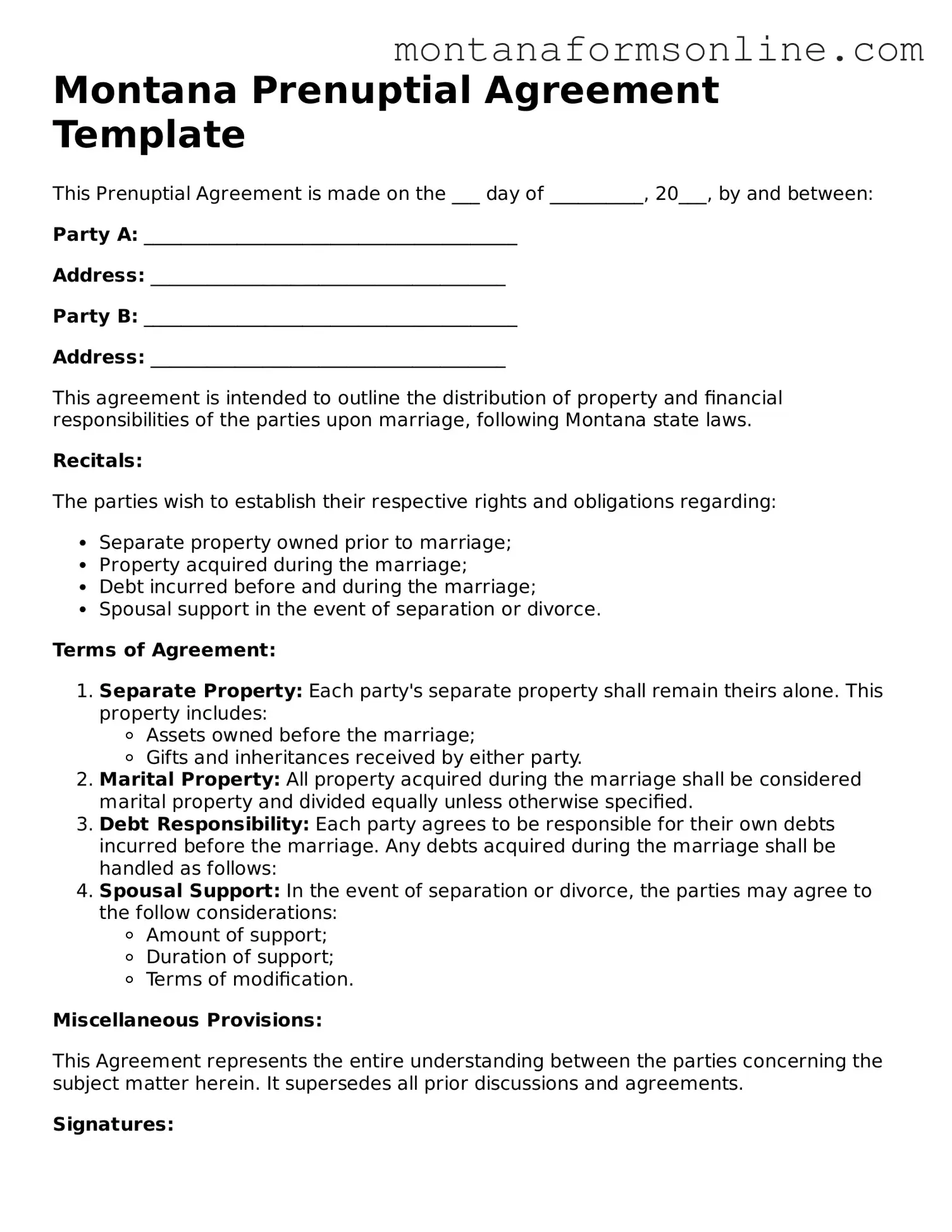A Cohabitation Agreement is similar to a prenuptial agreement in that it outlines the rights and responsibilities of partners who live together without being married. This document can address issues like property division, financial responsibilities, and support obligations, much like a prenuptial agreement does for married couples. It helps to establish clear expectations and can prevent misunderstandings if the relationship ends.
A Postnuptial Agreement serves a similar purpose to a prenuptial agreement but is created after the marriage has taken place. This document can modify or clarify the terms of a couple's financial arrangements and property rights. Like a prenuptial agreement, it can provide peace of mind by ensuring both parties understand their rights and obligations, especially if circumstances change during the marriage.
A Separation Agreement is often used when a couple decides to live apart but is not yet divorced. This document outlines how assets and debts will be divided, as well as arrangements for child custody and support. Similar to a prenuptial agreement, it aims to protect each party’s interests and can serve as a roadmap for future negotiations during the divorce process.
A Will can also share similarities with a prenuptial agreement, particularly regarding the distribution of assets upon death. Both documents can provide clarity about how property should be divided, ensuring that each party's wishes are honored. While a prenuptial agreement focuses on the marital relationship, a will addresses the distribution of assets after death, making both essential for comprehensive estate planning.
A Trust is another legal document that can complement a prenuptial agreement. A trust can manage and protect assets for the benefit of one or more beneficiaries, similar to how a prenuptial agreement delineates asset ownership and distribution. Both documents serve to safeguard assets, ensuring they are used according to the individual's wishes, whether during their lifetime or after their passing.
An Asset Protection Agreement shares the goal of a prenuptial agreement by safeguarding assets from potential creditors or legal claims. This document can specify which assets are protected and how they should be handled in the event of a financial dispute. Like a prenuptial agreement, it seeks to prevent financial loss and provide security for both parties involved.
A Business Partnership Agreement can resemble a prenuptial agreement in the context of couples who own a business together. This document outlines each partner's roles, responsibilities, and how profits and losses will be shared. Just as a prenuptial agreement addresses marital assets, a business partnership agreement delineates ownership interests and operational guidelines, ensuring a clear understanding between partners.
A Financial Agreement, often used in divorce proceedings, is akin to a prenuptial agreement as it outlines how finances will be managed during and after the marriage. This document can address alimony, child support, and division of property, similar to the provisions found in a prenuptial agreement. Both documents aim to provide clarity and fairness regarding financial matters.
A California Lease Agreement form is a legally binding document used between a landlord and a tenant to outline the terms and conditions of renting a property in California. This form covers various aspects including rent payments, security deposits, and the rights and duties of both parties. Crafting a comprehensive lease agreement is crucial for ensuring a clear understanding and avoiding future disputes, as noted on TopTemplates.info.
An Employment Contract can have parallels with a prenuptial agreement when it comes to defining roles, responsibilities, and expectations. In a marital context, a prenuptial agreement sets forth financial expectations, while an employment contract specifies job duties and compensation. Both documents serve to protect the interests of the parties involved by clearly outlining the terms of the agreement.
